Filter by
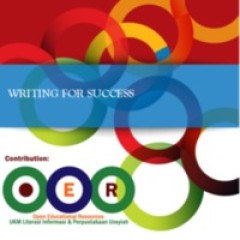
Writing for Success
Writing for Success is a text that provides instruction in steps, builds writing, reading, and critical thinking, and combines comprehensive grammar review with an introduction to paragraph writing and composition. Beginning with the sentence and its essential elements, this book addresses each concept with clear, concise and effective examples that are immediately reinforced with exercises …
- Edition
- -
- ISBN/ISSN
- -
- Collation
- -
- Series Title
- -
- Call Number
- 420
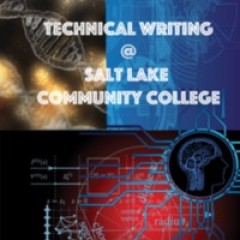
Technical Writing @ SLCC
What is technical writing? You can think of it as writing about specialized topics or you could also think of it as using technology to communicate your ideas. A science lab report, a specification, a change order for building construction, or patient education materials–just to name a few–are all considered technical writing. Similarly if you design a webpage or a brochure this can also be…
- Edition
- -
- ISBN/ISSN
- -
- Collation
- -
- Series Title
- -
- Call Number
- 420
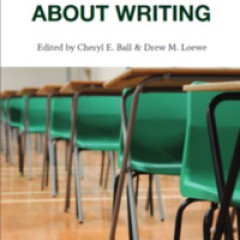
Bad Ideas About Writing
intend this work to be less a bestiary of bad ideas about writing than an effort to name bad ideas and suggest better ones. Some of those bad ideas are quite old, such as the archetype of the inspired genius author, the five-paragraph essay, or the abuse of adjunct writing teachers. Others are much newer, such as computerized essay scoring or gamification. Some ideas, such as the supposed demis…
- Edition
- -
- ISBN/ISSN
- -
- Collation
- -
- Series Title
- -
- Call Number
- 420
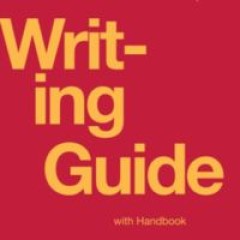
Writing Guide with Handbook
Writing Guide with Handbook aligns to the goals, topics, and objectives of many first-year writing and composition courses. It is organized according to relevant genres, and focuses on the writing process, effective writing practices or strategies—including graphic organizers, writing frames, and word banks to support visual learning—and conventions of usage and style. The text includes an …
- Edition
- -
- ISBN/ISSN
- -
- Collation
- -
- Series Title
- -
- Call Number
- 420
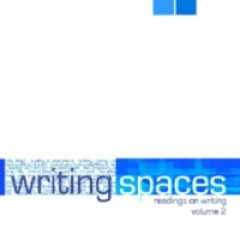
Writing Spaces Readings on Writing Volume 2
Volumes in Writing Spaces: Readings on Writing offer multiple perspectives on a wide-range of topics about writing. In each chapter, authors present their unique views, insights, and strategies for writing by addressing the undergraduate reader directly. Drawing on their own experiences, these teachers-as-writers invite students to join in the larger conversation about the craft of writing. Con…
- Edition
- -
- ISBN/ISSN
- -
- Collation
- -
- Series Title
- -
- Call Number
- 400
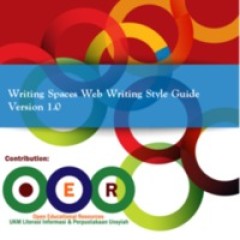
Writing Spaces Web Writing Style Guide
The Writing Spaces Web Writing Style Guide was created as a crowdsourcing project of Collaborvention 2011: A Computers and Writing Unconference. College writing teachers from around the web joined together to create this guide (see our Contributors list). The advice within it is based on contemporary theories and best practices. While the text was originally written for students in undergrad…
- Edition
- -
- ISBN/ISSN
- -
- Collation
- -
- Series Title
- -
- Call Number
- 400

Writing for Success
Writing for Success is a text that provides instruction in steps, builds writing, reading, and critical thinking, and combines comprehensive grammar review with an introduction to paragraph writing and composition. Beginning with the sentence and its essential elements, this book addresses each concept with clear, concise and effective examples that are immediately reinforced with exercises …
- Edition
- -
- ISBN/ISSN
- -
- Collation
- -
- Series Title
- -
- Call Number
- 400

About Writing: A Guide
This writer’s reference condenses and covers everything a beginning writing student should need to successfully compose college-level work. The book covers the basics of composition and revising, including how to build a strong thesis, how to peer review a fellow student’s work, and a handy checklist for revision, before moving on to a broad overview of academic writing. Included for those …
- Edition
- -
- ISBN/ISSN
- -
- Collation
- -
- Series Title
- -
- Call Number
- 421
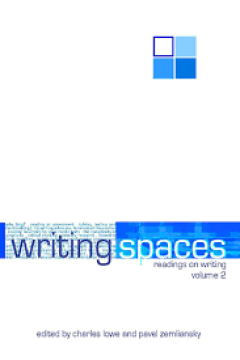
Writing Spaces Readings on Writing Volume 2
Volumes in Writing Spaces: Readings on Writing offer multiple perspectives on a wide-range of topics about writing. In each chapter, authors present their unique views, insights, and strategies for writing by addressing the undergraduate reader directly. Drawing on their own experiences, these teachers-as-writers invite students to join in the larger conversation about the craft of writing. Con…
- Edition
- -
- ISBN/ISSN
- -
- Collation
- -
- Series Title
- -
- Call Number
- 421
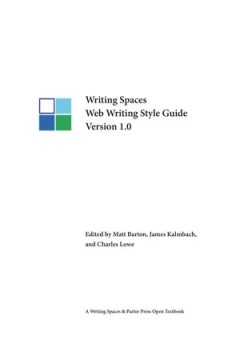
Writing Spaces Web Writing Style Guide
The Writing Spaces Web Writing Style Guide was created as a crowdsourcing project of Collaborvention 2011: A Computers and Writing Unconference. College writing teachers from around the web joined together to create this guide (see our Contributors list). The advice within it is based on contemporary theories and best practices. While the text was originally written for students in undergrad…
- Edition
- -
- ISBN/ISSN
- -
- Collation
- -
- Series Title
- -
- Call Number
- 421
 Computer Science, Information & General Works
Computer Science, Information & General Works  Philosophy & Psychology
Philosophy & Psychology  Religion
Religion  Social Sciences
Social Sciences  Language
Language  Pure Science
Pure Science  Applied Sciences
Applied Sciences  Art & Recreation
Art & Recreation  Literature
Literature  History & Geography
History & Geography